Is Our Thinking About Flies All Wrong?
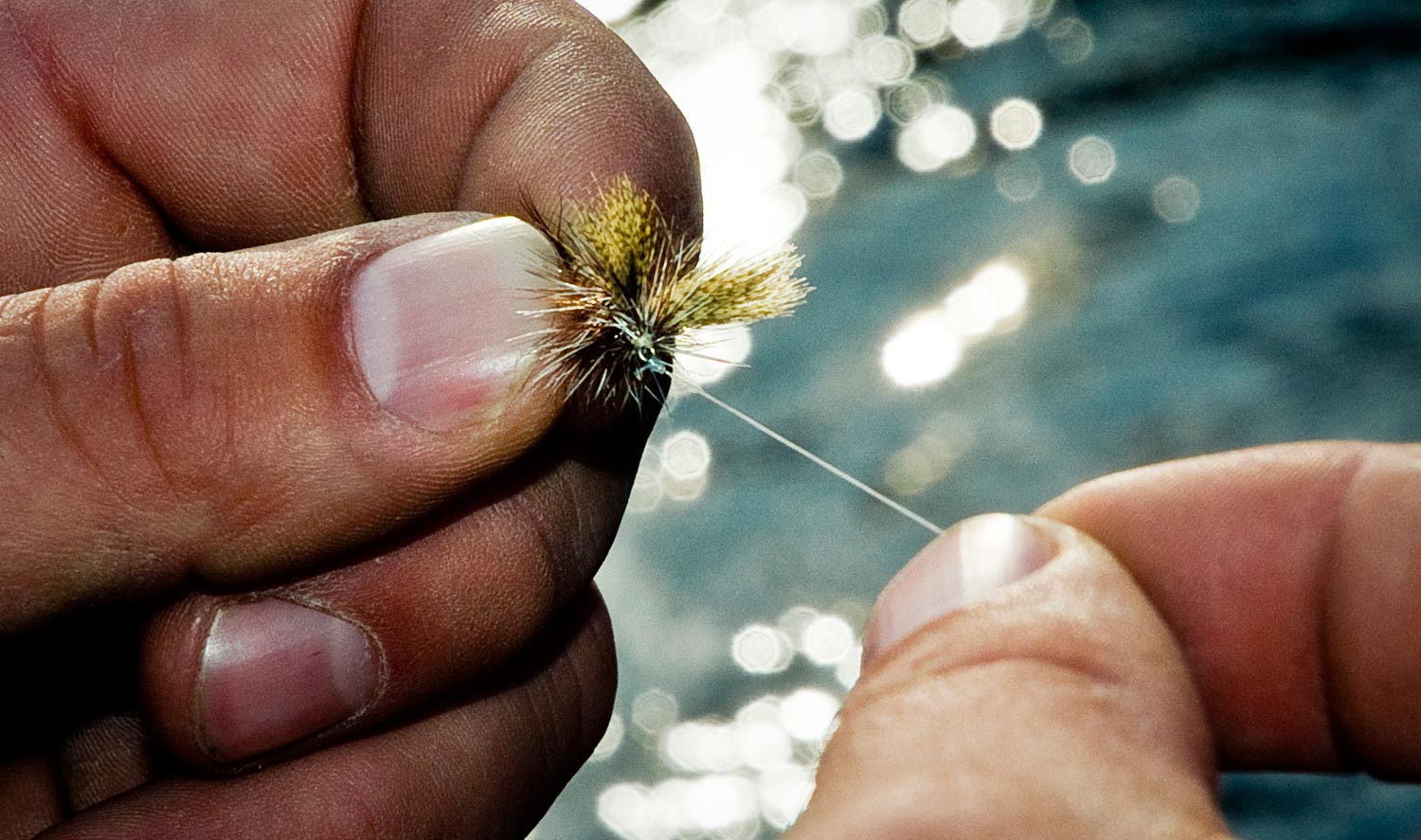
By Dan Frasier
What if I were to tell you there is no such thing as a trout fly?
A few days ago my good friend and fly designer Steve Martinez posted a link to one of his flies that Orvis carries; his Frankenstein Sculpin. I love this fly, but his comment intrigued me. He wrote; “Although I designed this fly for carp, it has been a killer smallmouth fly this year here on the Great Lakes.” No doubt that’s a true statement. It’s a killer fly. But my first thought was, “Well, duh. It’s a fly that intends to look like a Goby, the major baitfish on his part of the Great Lakes. Of course it works for anything eating them.” And that is when it occurred to me; We’ve been doing it all wrong.
In my book, The Orvis Beginners Guide to Carp Flies, I emphasize repeatedly that there is no such thing as a carp fly. There are flies, designed to look like certain foods, that work where carp eat those things. If you don’t match the pattern with the food in the area that carp are eating, you’re SOL. Carp aren’t special in this way. Trout flies work under the same premise. An Elk-hair Caddis works where trout are eating caddis and doesn’t where they are eating scuds. And, an Elk-hair Caddis works on carp that are eating caddis and doesn’t where they are eating Gobies. So, is the Elk-hair Caddis a trout fly? Or is it a fly that works on fish eating caddis? I think the answer is obvious.
Yet when I look through any fly catalogue from the major manufacturers, the overriding theme seems to be to segregate flies by species. Wanna catch a pike? Better check out the pike flies. Fishing for smallies? Turn to the bass section. We ignore the fact that these species key on certain foods at certain locations just as much as trout do. We also ignore that many different species in that location will be all eating the same food organism; that a hex fly will work on smallies eating hexes just as well as it does for trout eating hexes. That’s why flies created for one species are frequently used by experienced anglers for others.
The experimentation and expansion of the species anglers chase with the fly seems to be increasing at an exponential rate. No longer do you hear talk of certain fish species being lesser than others. People celebrate catching panfish without apology. Carp are the obvious poster child but all species seem to be looked at as something worth chasing. From gar to whitefish to musky, the world of opportunities is evolving within flyfishing, and for that reason we need to change the way we categorize flies. It’s time to
Read More »Your Guide Is Your Dog
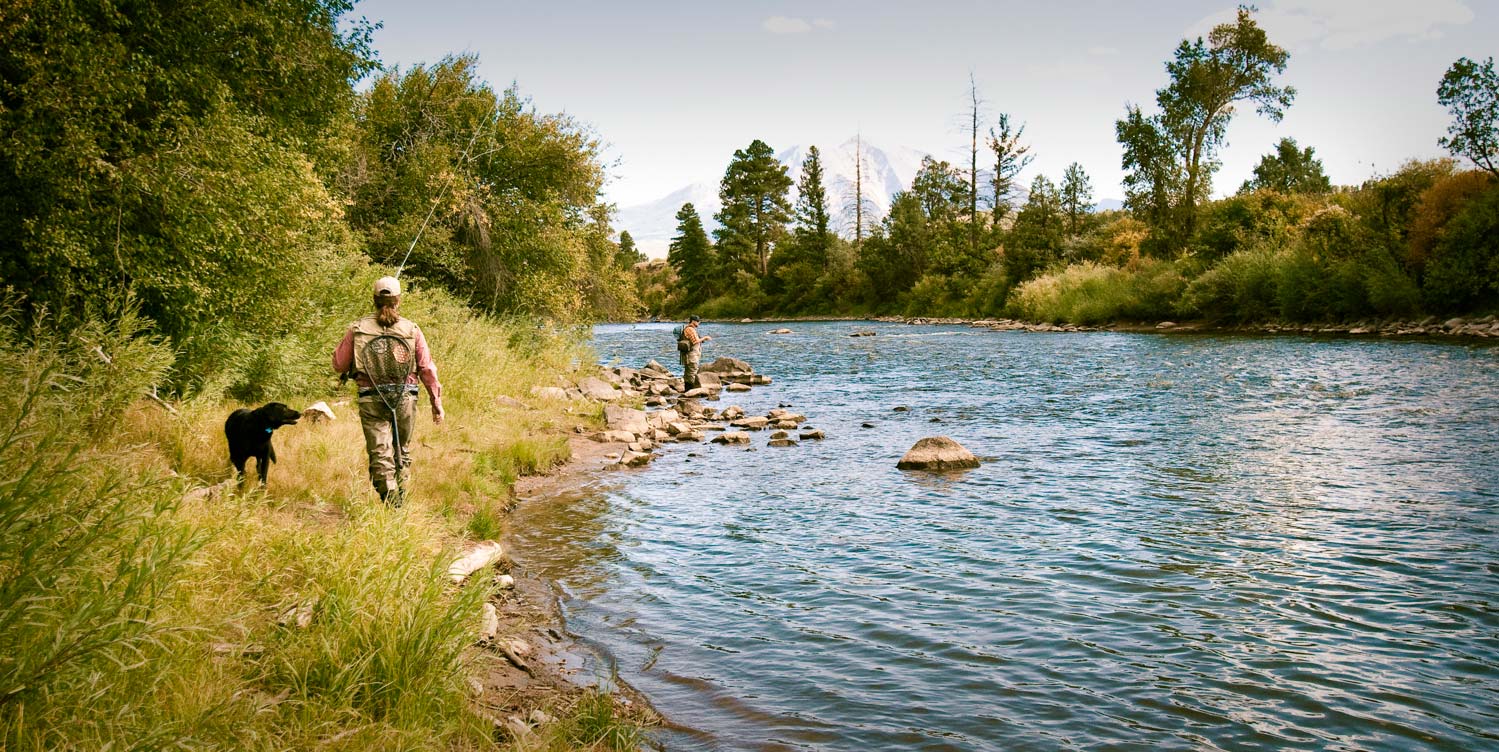
I’m a big believer in DIY destination fishing, but I’m not a fool.
I traveled with a good friend to the Florida Keys recently. It was my buddy’s first time fishing the Keys. He’s a great angler, resourceful and all about DIY fishing. He’s turned me on to some great water and it was my turn to return the favor.
We fished for three days with Captain Joel Dickey. Joel and I are old friends, having spent a lot of time trout fishing together in North Georgia and North Carolina before he moved to the Keys and became a full time flats guide. He’s one of the fishiest guys I’ve ever known and within a decade became one of the best in the game. Fishing with Joel is a treat I always look forward to.
The Florida Keys is one of the most amazing fisheries anywhere. It’s also one of the most demanding. It’s a place where you can witness pure magic and utter despair. I’ve had some amazing days and some brutal boat rides. This trip turned out to be neither. The fishing had been great for several weeks and, as happens all too often, things changed.
Fishing in the Keys, more than anywhere else I’ve ever fished, is condition dependent. The day we arrived the weather turned, ever so slightly, for the worse and the fishing became very challenging. We caught fish every day, but we worked for them.
My buddy had come down with me hoping to catch his first tarpon. We checked that off the list early in the trip. It wasn’t a big fish but I assured him it was a good start. Better to land a small tarpon on your first shot than make a hundred unsuccessful presentations to the local submarine fleet. Get that fish under your belt before they have a chance to get in your head.
He also fed a permit. Even though he missed the hook set, it was a great visual eat close to the boat. We even saw the gills flair. That’s the one that will get inside his head, I’m sure. He had another agenda.
Read More »12 Tips For Epic Fly Fishing Trips On The Cheap

You may be poor, but you don’t have to fish like it.
Some of the greatest fly fishing adventures I’ve taken have cost me the least. I love fishing in exotic locations and spending time at great fishing lodges. Who wouldn’t? But that’s a fairly recent thing for me and primarily funded by my Nikon. Working for my fishing days has paid off for me, but that’s not an option for everyone.
I have never let a lack of funds get between me and great fly fishing. I’ve always figured out a way to get on the water and create some kind of epic adventure. Over the years I’ve figured out one or two tricks that make for great fly bum trips on the cheap. I’m going to share a few of them so you can do the same.
TEAM UP
There’s nothing more helpful than a good fishing buddy, or two. Having good friends to share both costs and experience with will make your fishing trips a hundred times better. A buddy can do more than split the cost of gas. He might lend you a rod or take turns rowing the boat. He may have knowledge about water that you don’t. He may just tell a good story or be a good listener. Finding good, compatible friends to travel and fish with is the most important step you can take in having a truly epic trip.
CAMP
Hotels cost money and do very little to enhance the fishing experience. Camping saves you a bundle and makes the trip a whole lot more special. Waking up on the river beats the hell out of a continental breakfast. Get your camping gear in order and go as light as possible. Less time messing with gear means more time fishing. I have gone so far as to buy an extra tent, sleeping bag and a few necessities which I keep at a friend’s house in Denver. If I find a cheap ticket I don’t even have to pay the baggage fees.
DRIVE
I drive to Idaho and Wyoming from Georgia on a regular basis. I don’t do it because I enjoy the scenery of western Kansas. I do it because it saves me a bundle. Gas is not cheap but it’s often at least as cheap as an airplane ticket. Driving allows me to take advantage of a whole host of cost-cutting measures.
I can carry all of my camping gear and even sleep in the truck sometimes. I tow my Adipose skiff which saves me renting a boat. I don’t have the expense of a rental car. It saves a fortune. I even have a power inverter in the truck to charge batteries or run small electronics. I’m pretty self-sufficient when I’m on the road.
I will frequently coordinate the drive with buddies who choose to fly. They help out with the gas money and I pick them up at the airport and we all save the cost of a rental car. Driving to your fishing destination just gives you a lot more options.
Read More »Trout Fishing The Low Warm Water of Summer
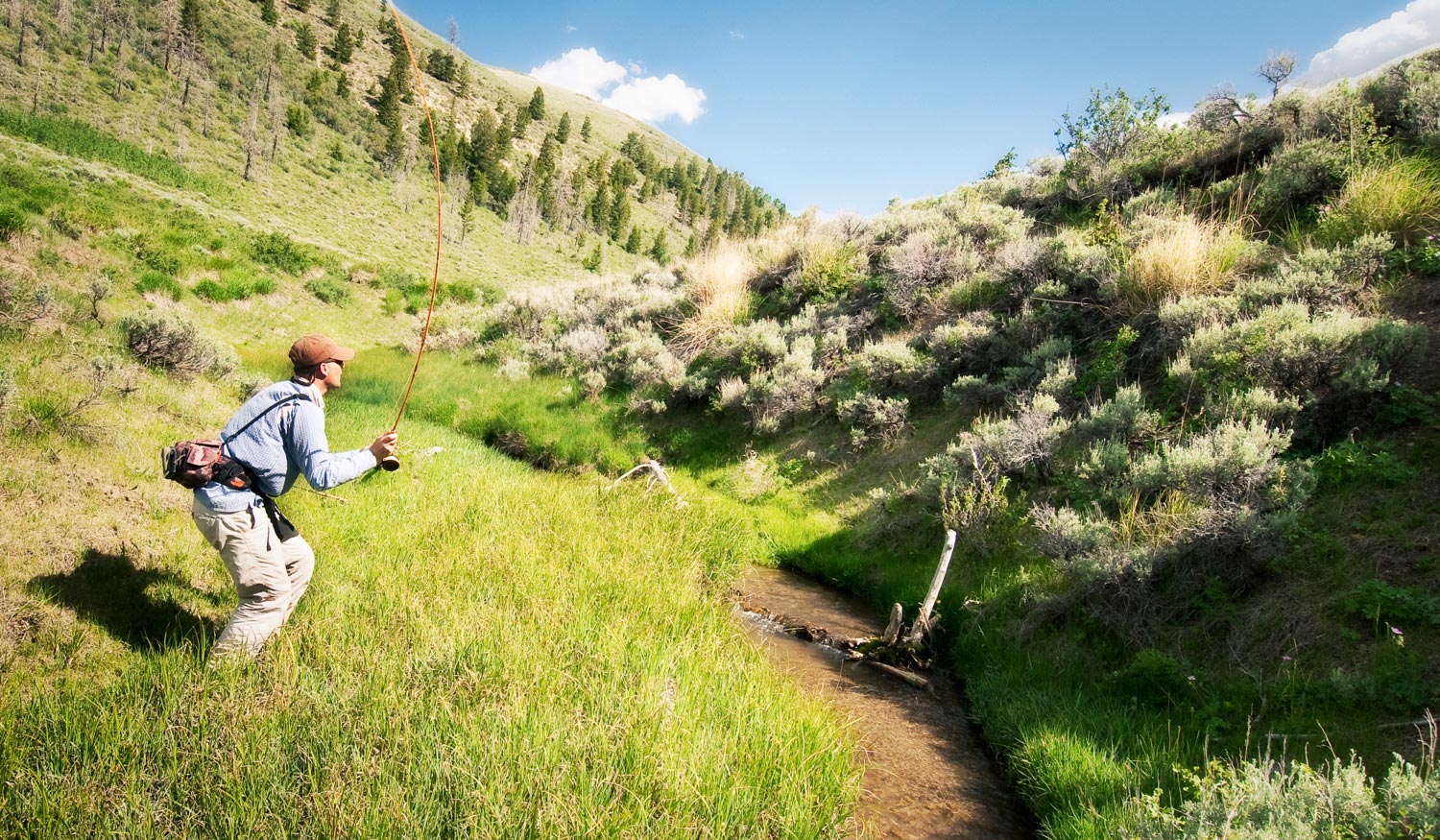
By Kevin Howell
Low, warm water is tough on trout and anglers.
Over the years I have been forced to fish for trout in some of the worst possible conditions, from high water, to days that the ice freezes instantly on your guides. The absolute hardest fishing of all though is the low hot water of late summer. Not only do the fish not want to feed but you have to worry about killing them when you hook them.
When water temperatures reach 70 degrees, it’s time to chase carp or bass. The main thing to remember is that you as an angler have an ethical responsibility when trout fishing in low, warm water. Use as large a tippet as you can, so you can land the fish as quickly as possible. If you are struggling to land a fish, break it off, so that you don’t stress it and kill it.
Spend as much time reviving the fish as you spent landing, if you spent 10 minutes (which is way too long) landing it, then spend 10 minutes reviving it. In low hot water you should not spend more than 1-2 minutes to land any fish, regardless of it size. The other big issue in the summer is taking pictures; in this low hot water do not take the fish out of the water. It is kind of like you running a half marathon and the very second you are done, someone holding your head under the water.
HERE ARE SOME OF MY BEST SUMMER TIPS:
Fish are reluctant to feed in times of warm water, or low water. They are just trying to survive so you need to draw a reaction or impulse strike. Your flies should have extra life added to them, rubber legs, soft hackles, Emu feather gills etc. The more annoying the motion of the fly the better your chance of getting a reaction strike.
Trout will not move a great distance to feed in low, warm water; your presentations will have to be almost in a direct line with the fish. This may require more sight fishing and/or multiple cast to the same area.
Be exceptionally careful of making waves in slow or shallow water. This will spook fish quicker than an errant cast.
Fish any decent
Read More »The Persistent Angler
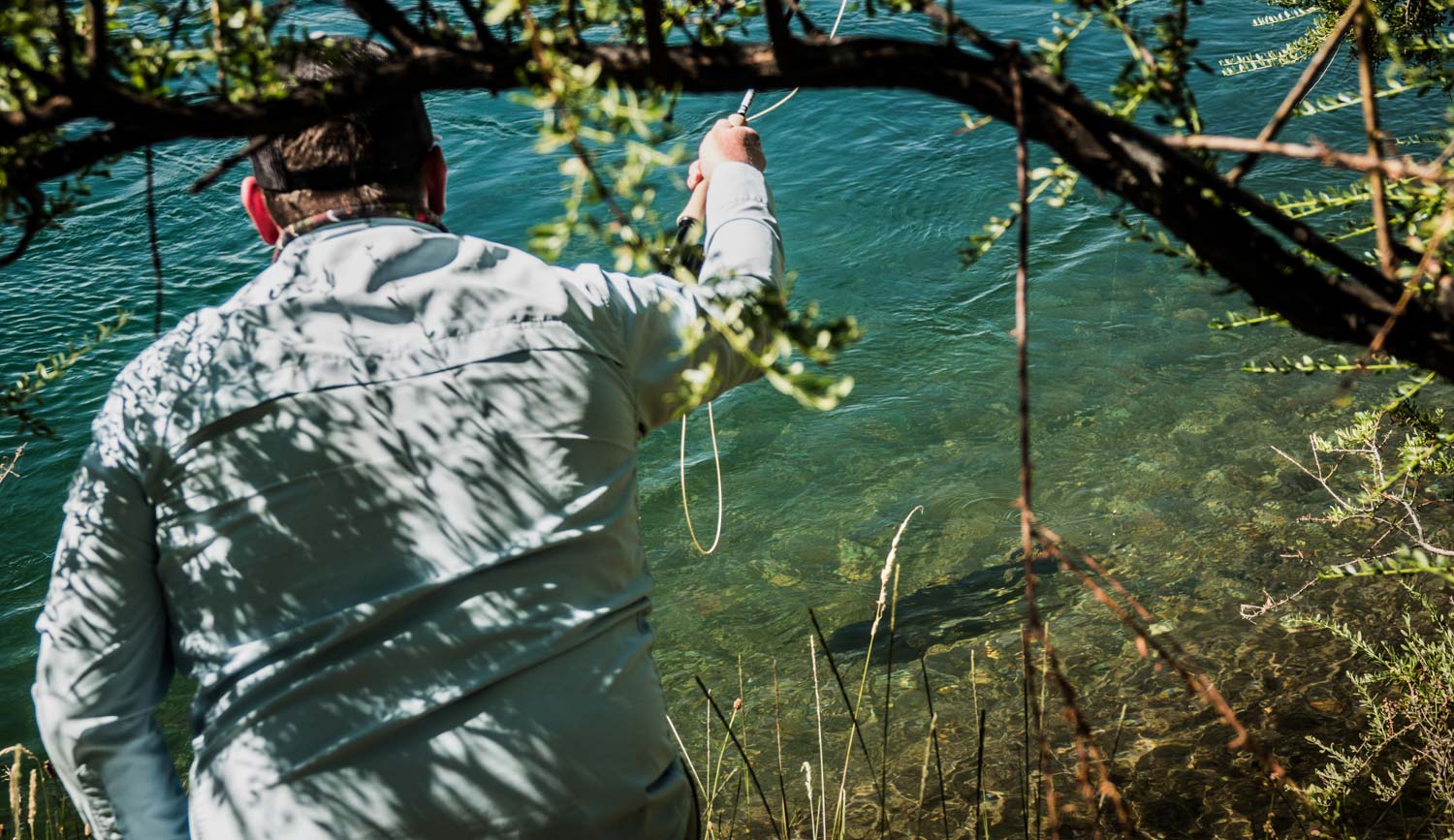
By Louis Cahill
Is there any point in continuing to pound a fish who just won’t eat?
The cool thing about fly fishing is that it offers such diversity. There is a species or a style of fishing every angler can enjoy. If you don’t like trout fishing, you may like bass or bonefish. If drifting dry flies isn’t your thing, stripping streamers may be. There is no wrong answer to the question, how should I fish? We all get something different out of fly fishing and, as long as you’re having fun and being respectful of the resources and your fellow angler, I say go for it!
Over the years, what I get from fly fishing has evolved, and it hasn’t evolved in the same way for every kind of fly fishing. I freely admit that, in some ways and for some fish, I’ve gotten lazy. I’m not proud of it but I don’t apologize for it either. Trout fishing specifically has become more of an excuse to hang out with my friends or my dog more than a goal oriented pursuit. I’m admittedly more interested in having fun than I am catching huge fish or a lot of fish. I guess that’s why I often find myself just as happy watching a buddy fish a run. I think it’s also why I’m perfectly happy walking away from a stubborn fish. The thing is, I admire anglers who don’t.
I’ve known a lot of anglers who really enjoy catching the uncatchable fish. A couple of them so focused they could care less about the other fish happily rising in a run and spend the bulk of the day butting heads with the stubborn fish who won’t eat.
The cool thing is that these guys, the really good ones, usually get that fish.
One of those anglers is Justin Pickett, no stranger to regular readers. Justin is one of those guys who almost always gets that problem fish to eat. I’ve watched him work a single fish for three hours. Like a sniper, dug in and waiting for a shot. When he gets locked in like that you may as well get comfortable. Have some lunch, take a nap, read a book, or just clip a walkie-talkie to his belt and go see the rest of the river. It’s going to take a minute.
You may think that’s cool or you may think it’s crazy but the results are hard to argue with. That fish he spent three hours on, while the rest of us had lunch, was a 32 inch brown trout and, yes, he landed it. There were four of us and no one thought that fish would eat, except Justin. I’ve never seen a more deserved fish.
The thing I think makes the case for persistence is
Read More »Faith and Steelhead
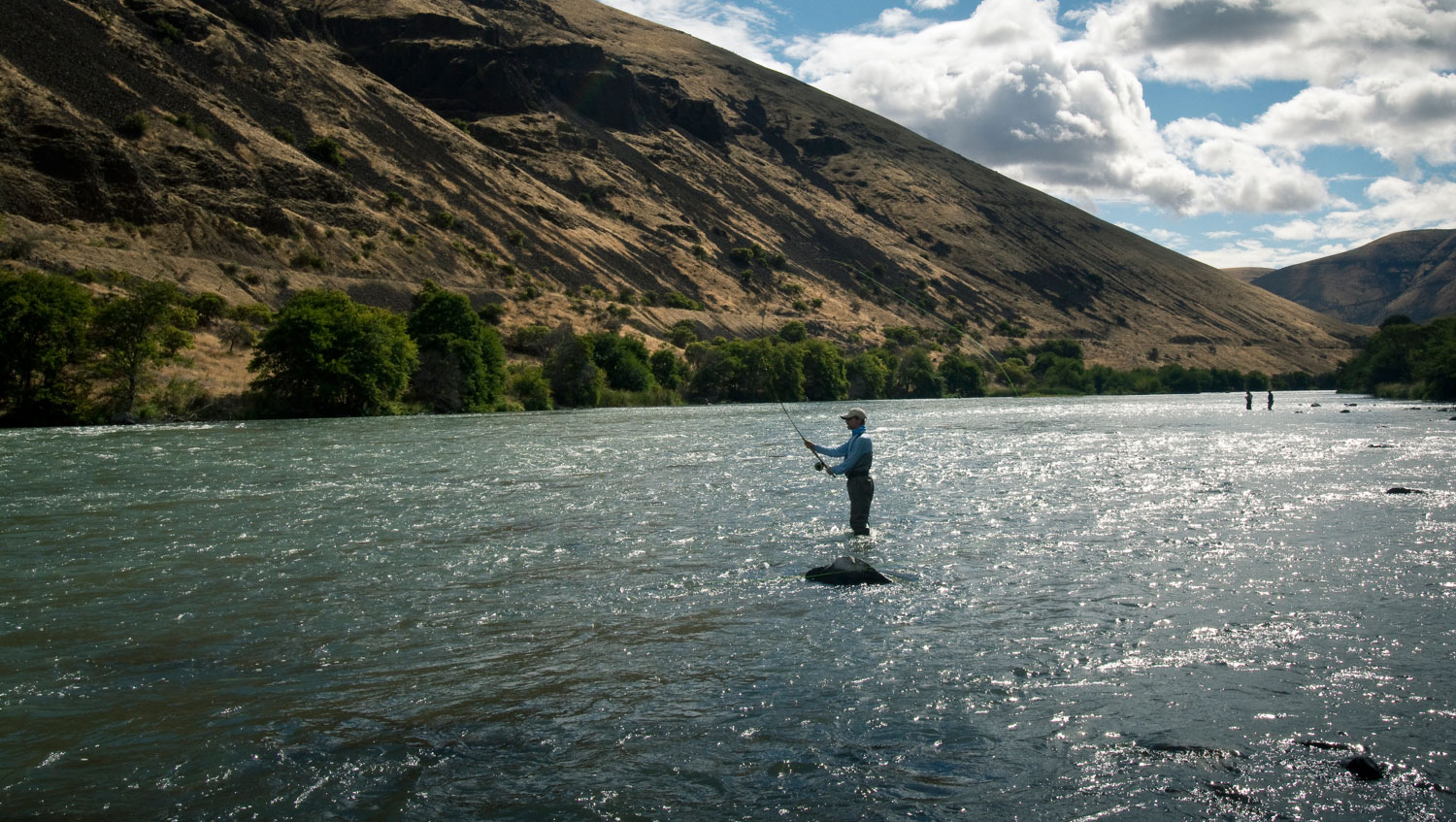
by Tim Harris
I just returned from my first real steelhead trip to the Deschutes in a couple of years.
I had to miss out all of last two summer seasons due to illness though I did manage a few days last winter where I actually hooked up several fish and landed one nice hatchery fish.
Now I’ve got the steelhead sickness again, it is time though to break out the floating line and the switch rod and begin to swing Streetwalkers across the currents. I’ll get up before dawn and head to the river in the early morning, rig up and wade out just as it begins to get light. Then begins the methodical, meditative practice of cast, mend, swing, and step until I am at the bottom of the run and I pack up and go to work. The cast is meditative too – strip, lift, swing, create the D loop, and let it rip. Mend once, maybe twice. Swing slowly. Take one to two steps down. Repeat. Repeat. Repeat.
All the while you are keeping faith.
Read More »How To Caych A Trophy Brown Trout
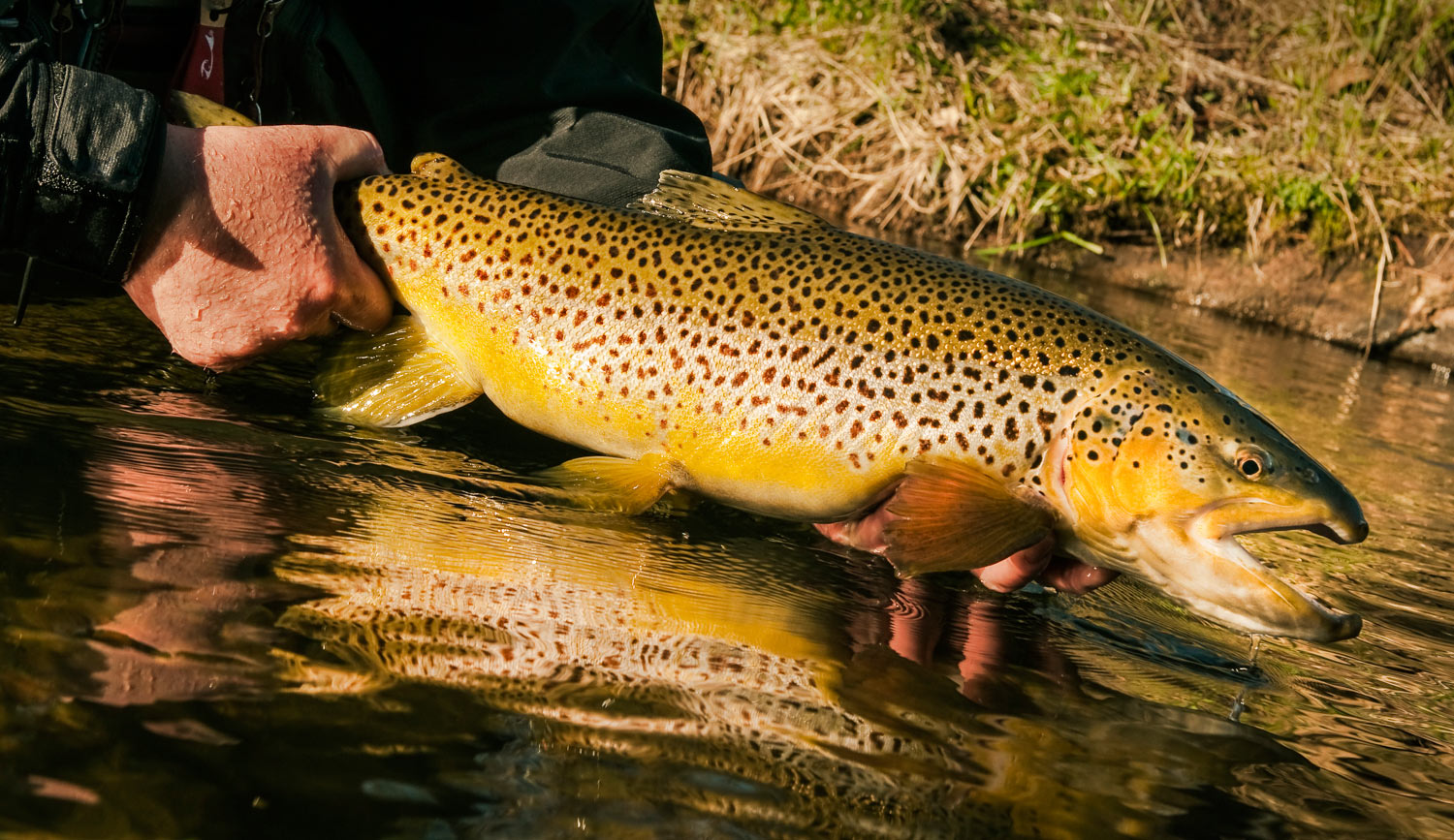
by Jason Tucker
I’ll never forget my first brown trout over 20 inches.
It was about 1:30 am after a very long float down a tiny stream. It had been a slow night with only a couple half-hearted tugs on our mouse imitations. We got down to one of the last holes with a feeding run above it and parked the boat. On my first cast the water erupted with a loud take but the fish missed. I placed my next cast where the fish had hit, made a couple of strips and let it coast. The strike was unmistakable, and I waited that extra half beat until I felt the fish before setting the hook. After a vigorous fight on my 5 weight we slid a 21-inch hook-jawed male into the net, took a couple of quick pics and let him go. It was a magical moment to be sure.
Since then I’ve caught several dozen fish over 20 inches, my biggest being over 28 inches long and about ten pounds. I’ve caught them at night and during the day by a variety of methods. That first 20+ inch fish was like flipping a switch for me. Which is why I’m surprised how often I still hear even experienced anglers express that they would love to catch a brown over 20 inches. Here’s a few tips to make that dream a reality.
KNOW THY TROUT
Brown trout have the potential to get big– really big. The world record is over forty pounds, and in lakes and reservoirs they commonly average ten to twenty pounds. In good water the only limiting factors are mortality and food abundance. River environments tend to limit brown trout growth more than lakes, but most streams will still hold good numbers of browns over twenty inches.
While young trout mostly feed on insects and larvae (think mayflies and nymphs) as they reach that magical twenty-inch mark, insects no longer serve to curb the appetite. At this point they become largely piscivorous, or fish eaters, according to researchers. While this is true, brown trout make the most of any opportunity, and this includes seasonal abundance brought about by the larger fly hatches. In midsummer they shift their diets to include mice and frogs eaten at night.
Another factor to consider is the changed social/dominance status that increasing size lends to them. Small trout have to fend for themselves as best they can, while large trout will always take up the best, most secure lies in a system, and defend them from other fish. This is often deep under a cut bank, or at the bottom of a log jam in a deep hole. As they grow larger they also prefer to feed after dark as long as available food sources permit this. You end up with a situation where smaller fish are forced to feed during the day and in positions easily fished to, while the largest fish feed only at night or in spots impossible to reach.
Don’t despair. Under the right circumstances those big fish will come out and feed. A prime example is
Read More »Cicada Fly Patterns – 4 Gink & Gasoline Favorites

I get asked the question all of the time what’s my favorite place to fly fish?
Some may find it weird but I always have a hard time answering that question. I’ve had the opportunity to fly fish so many unique and beautiful places in my life that there’s no way I could settle on one place as my sole favorite. If you’re wanting a quick answer, a much better question to ask me would what’s my favorite hatch to fly fish. I’d have no problem giving you a straight answer on this question. If I could spend all my time traveling around and planning out my fly fishing for one specific hatch it would be with 100% certainty, the periodic cicada hatches that occur along the Eastern United States.
In 2000, I got to experience fly fishing the periodic cicada hatch for the first time in my life. The hatch happened to occur around my home waters and for one and a half months straight, I got to experience the heavenliness of strictly fishing giant foam cicada patterns on the surface. I’d never seen a hatch have so much effect on my resident fish and I’d never witnessed such epic dry fly fishing. Day after day, I landed multiple trophy trout. The amount of food that a periodic cicada hatch provides an ecosystem is insane. Some scholars claim that the food value of a periodic cicada hatch is equivalent to an Alaskan salmon run. Have no doubts, the cicada has the power to convince the smartest and biggest fish to drop their guard and come out and feed for several weeks with total recklessness 24 hours a day.
You don’t have to be an expert fly fisherman to find success fishing a cicada hatch. It’s probably the least technical hatch I’ve ever fished. All you need to do is get yourself a good cicada fly pattern and fish it on waters where the hatch is occurring. The only thing you really need to know is go big with your tippet (2X-3X) and don’t be too quick on your hook sets. Below are some of my favorite cicada patterns.
Read More »Beefcake Hopper
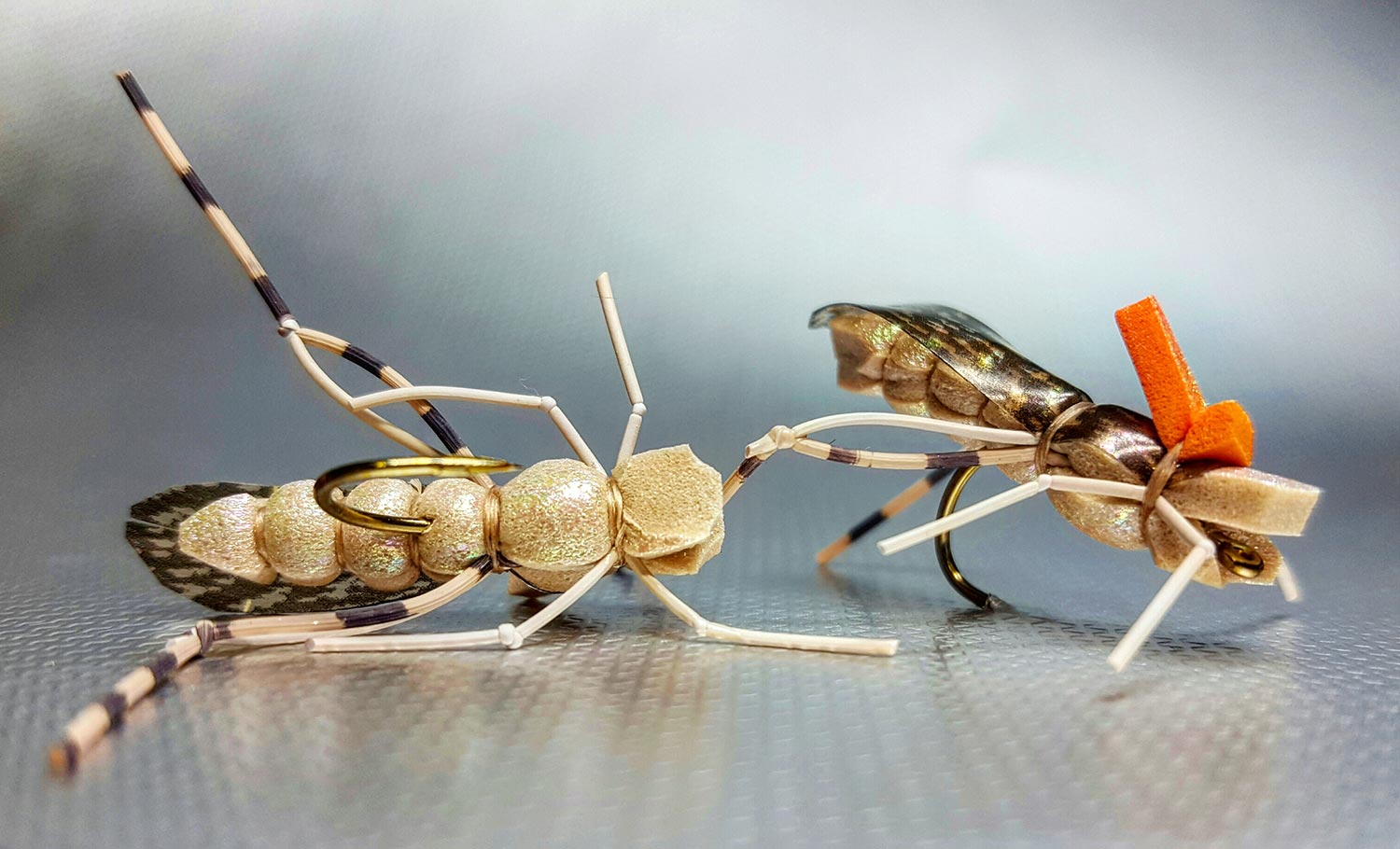
By Bob Reece
I look forward all year to the warm summer and fall days that allow me to fish hopper dropper rigs.
I fill one fly box each winter to meet this need. One half is filled with my Fusion and Clearwater Crawler nymphs. The opposite side is filled to the brim with Beefcake Hoppers.
When designing this pattern, I spent time viewing natural hoppers from below the surface of the water. The differentiation of body segments and leg movements act as prominent distinctions. These factors guided my design of the underside of the fly. The Thin Skin wing provides an accurate imitation while drastically increasing the durability of the top side of the fly. With the application of UV resin, the durability of the fly’s underside is also increased.
The foundation of this pattern is the Tiemco 2499BL. Having been created for the world of nymphing, this outstanding hook is ideal for extended body terrestrials. Short in the shank and wide in the gap, the hook keels this buoyant pattern very effectively. The large gap
Read More »The Geezer Hatch
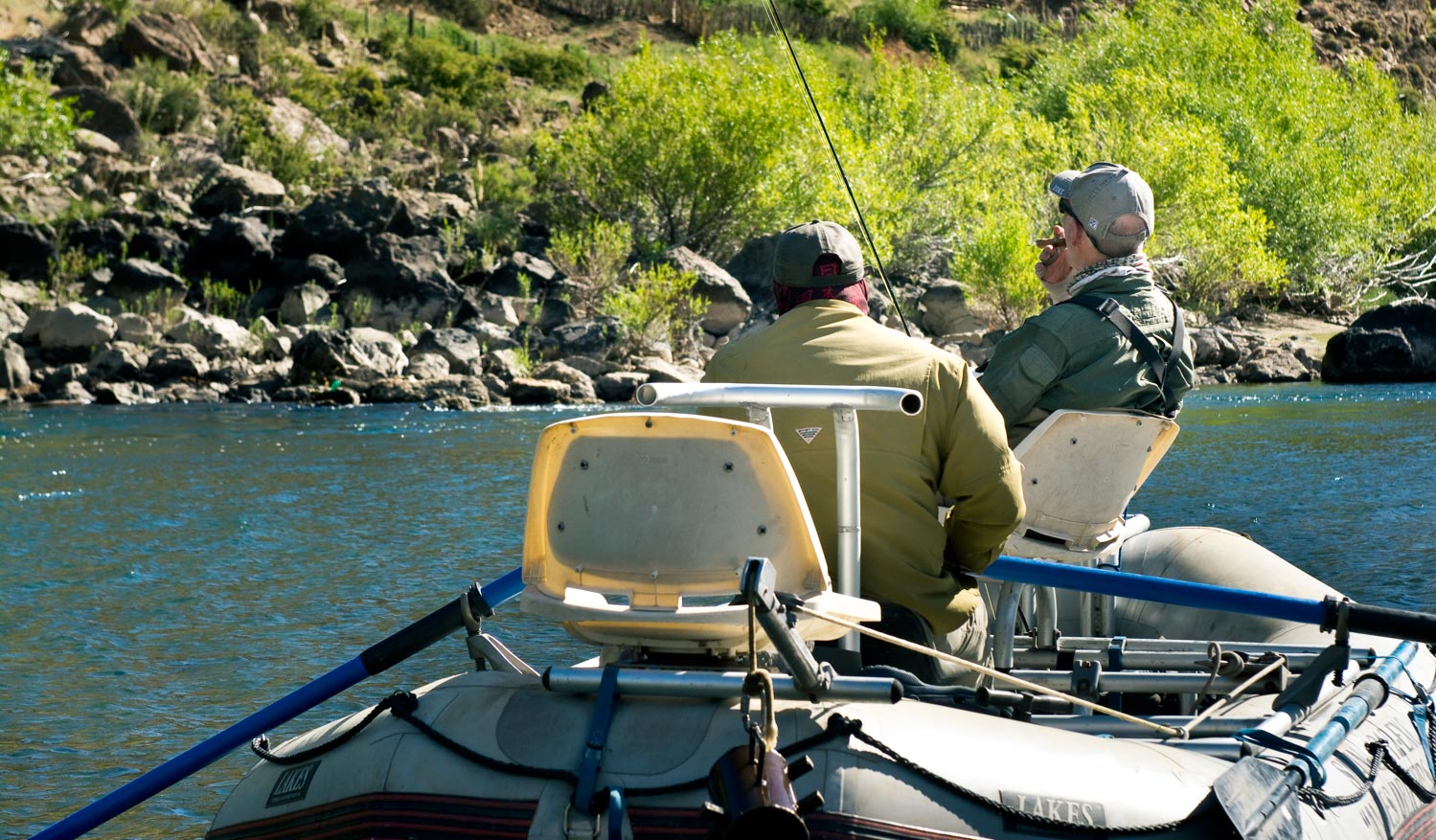
Ever heard the phrase, “the geezer hatch is on?”
I’ve used it myself. It’s a common way of saying there are a bunch of old dudes on the water. It’s pretty common to hear younger anglers and guides grousing or making jokes about old guys who can’t see their flies or wade like a mummy in a black and white horror film.
In the past decade, fly fishing has taken on the soundtrack of extreme sport and with it some of the attitude. Too many of us feel compelled to judge our fellow anglers and that comes down pretty hard on the over-seventy set.
Like any cross section of humanity, old guys run the gambit from pompous assholes to salt of the earth. On the whole, the younger guys I know treat them pretty well but once they are out of ear shot, there is often a comment made that reveals the judgment.
Maybe I notice it because I’m at the point in my life where it’s painfully clear that we’re all going down that road. It may also be that I habitually pull for the underdog and have a heightened intolerance to inequity. I’m not saying it’s a major problem, just an underlying prejudice that rubs me wrong sometimes.
This is where my friend Mike Ray comes into the picture. I’ve gotten to know Mike over the last year or so and had the pleasure of fishing with him both on the river and in the salt. Mike is a great angler. A solid caster, in spite of a badly scarred hand, and an all-around fishy guy who’s company I thoroughly enjoy. He’s about seventy, a retired lawyer who’s done well for himself.
If you didn’t know him, if you hadn’t fished with him, you might be tempted to throw him right into the geezer category. (Sorry Mike.) If you spend some time around the man, you see something completely different. That’s how prejudice works.
In fact, what you find is a guy with a youthful spirit, an open mind, and a hell of a nice cast. But there has always been something more to Mike that I just couldn’t put my finger on. There is an air about him when he put on his waders and climbs in the boat that is nothing short of a transformation.
There’s a calmness that comes over Mike when those waders go on. A comfort and a confidence that you don’t see in many anglers. His body language changes. The way he stands and holds his cigar, the way takes a knee on the bank, and I think even the way he sees the world become something completely different. Something old and familiar.
On a recent trip to Patagonia I found out what it is.
Read More »